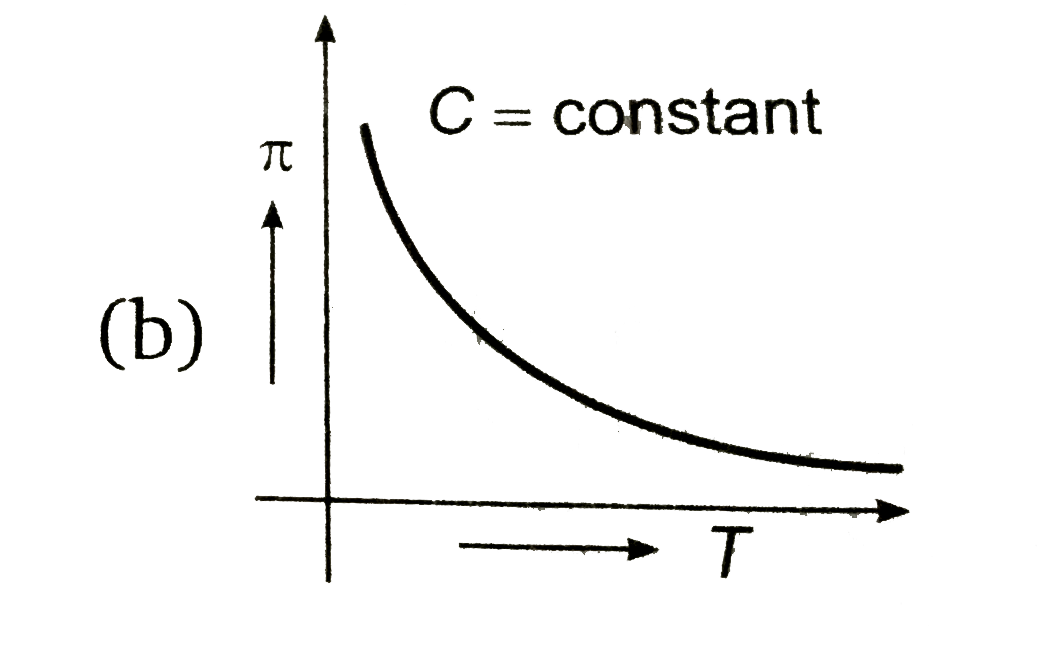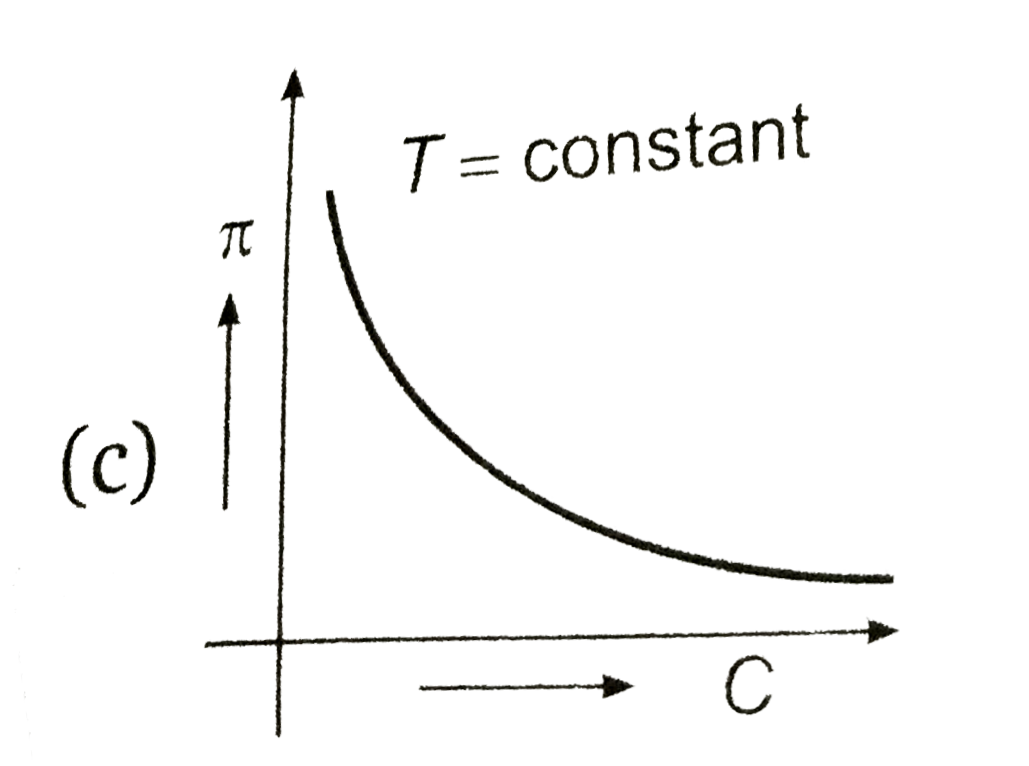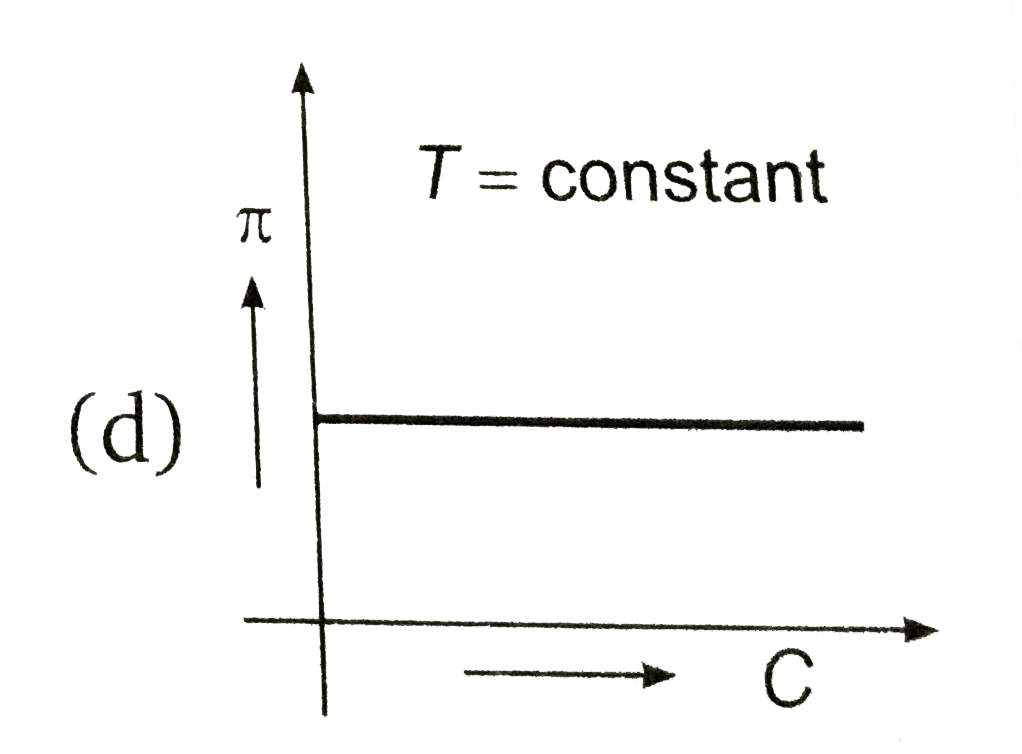What is osmotic pressure ? Why it is a colligative property ?
Step-by-Step Text Solution
Step 1: Define Osmotic Pressure
Osmotic pressure is defined as the minimum excess pressure that must be applied to a solution to prevent the flow of solvent into it through a semi-permeable membrane. This phenomenon occurs when a solvent moves from a region of lower solute concentration to a region of higher solute concentration in order to equalize the concentrations on both sides of the membrane.
Step 2: Explain the Formula for Osmotic Pressure
The osmotic pressure (π) can be mathematically expressed using the formula:
π=CRT
where:
- π = osmotic pressure
- C = concentration of the solute (in moles per liter)
- R = universal gas constant (0.0821 L·atm/(K·mol))
- T = absolute temperature (in Kelvin)
Step 3: Relate Concentration to Moles
The concentration C can also be expressed in terms of the number of moles N and the volume V of the solution:
C=NV
Substituting this into the osmotic pressure formula gives:
π=NVRT
Step 4: Rearranging the Equation
Rearranging the equation leads to:
πV=NRT
This shows that osmotic pressure is directly proportional to the number of moles of solute present in the solution.
Step 5: Explain Why Osmotic Pressure is a Colligative Property
Colligative properties are those properties of solutions that depend on the number of solute particles in a given amount of solvent, rather than the identity of the solute. Since osmotic pressure depends on the number of moles of solute (N), it qualifies as a colligative property.
Osmotic pressure is defined as the minimum excess pressure that must be applied to a solution to prevent the flow of solvent into it through a semi-permeable membrane. This phenomenon occurs when a solvent moves from a region of lower solute concentration to a region of higher solute concentration in order to equalize the concentrations on both sides of the membrane.
The osmotic pressure (π) can be mathematically expressed using the formula:
π=CRT
where:
- π = osmotic pressure
- C = concentration of the solute (in moles per liter)
- R = universal gas constant (0.0821 L·atm/(K·mol))
- T = absolute temperature (in Kelvin)
The concentration C can also be expressed in terms of the number of moles N and the volume V of the solution:
C=NV
Substituting this into the osmotic pressure formula gives:
π=NVRT
Rearranging the equation leads to:
πV=NRT
This shows that osmotic pressure is directly proportional to the number of moles of solute present in the solution.
Colligative properties are those properties of solutions that depend on the number of solute particles in a given amount of solvent, rather than the identity of the solute. Since osmotic pressure depends on the number of moles of solute (N), it qualifies as a colligative property.
Topper's Solved these Questions
- BOOK - XII BOARDS PREVIOUS YEARCHAPTER - XII BOARDSEXERCISE - Outside Delhi : SET-I35videos
XII BOARDS
- BOOK - XII BOARDS PREVIOUS YEARCHAPTER - XII BOARDSEXERCISE - Outside Delhi : SET-II13videos
XII BOARDS
- BOOK - XII BOARDS PREVIOUS YEARCHAPTER - XII BOARDSEXERCISE - Set -III11videos
XII BOARDS
- BOOK - XII BOARDS PREVIOUS YEARCHAPTER - SAMPLE PAPER 2019EXERCISE - SECTION: D1videos
SAMPLE PAPER 2019
Similar Questions
Knowledge Check
- Question 1 - Select One
van't Hoff proved that osmotic pressure (π) is a colligative property. For an ideal solution, osmotic pressure(π) is helpful to determine that molecular mass of solute using MB=WBRTπ.V Relation can exxpressed by the curve (C = concentration) :
A B
B C
C D
D
Colligative properties
View SolutionWhy osmotic pressure is considered as colligative property ?
View Solution(i) Prove that osmotic pressure is a colligative property.
(ii) Calculate the molar of urea solution if it exerts an osmotic pressure of 2.45 atmosphere at 300K. (R = 0.0821 L atm. mol−1K−1).View SolutionColligative Properties
View SolutionColligative Properties
View SolutionColligative Properties
View SolutionColligative Properties
View Solution

